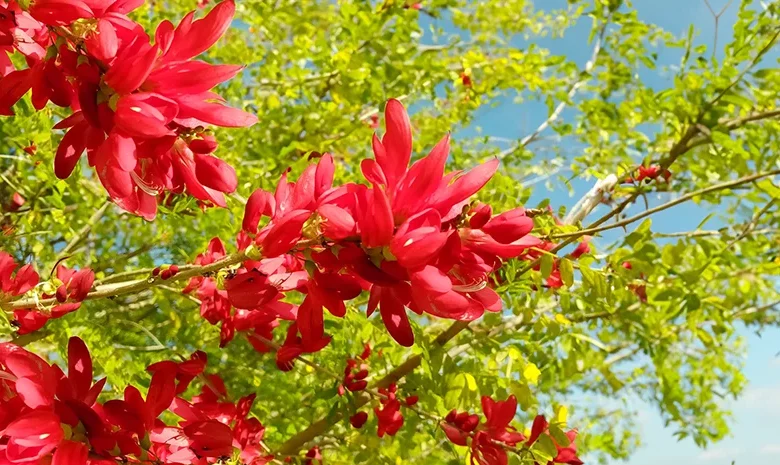Bwa Kwaib: Dominica’s Flower

Bwa Kwaib (Sabinea carinalis) was officially declared Dominica’s national flower in 1978. This small deciduous tree, endemic to the island’s coastal regions, profoundly connects to Dominica’s cultural heritage. The bright scarlet flowers of the Bwa Kwaib symbolize Dominica’s people’s resilience, courage, and strength. This flower reminds the country of its ability to overcome challenges and thrive despite adversity, much like its people, who are known for their resourcefulness and determination.
Symbolism and Role in National Identity
The rich red blossoms of the Bwa Kwaib represent Dominica’s natural environment and people’s vitality. It was selected as the national flower as part of the National Emblems Act of 1978, alongside the Coat of Arms and national flag. This decision marked a crucial moment in recognizing Dominica’s unique botanical heritage, particularly plants that had survived the island’s entire history. The hardy nature of Bwa Kwaib, thriving even in harsh conditions, further solidifies its status as a national symbol of resilience.
Ecological Importance
Apart from its cultural significance, the Bwa Kwaib also plays a vital role in the island’s biodiversity. Growing in dry coastal areas, the plant’s flowers bloom around April, creating a magnificent display of scarlet flowers across its branches. Despite its beauty, the Bwa Kwaib’s natural distribution is relatively low, making its preservation vital to maintaining Dominica’s rich ecosystem.




